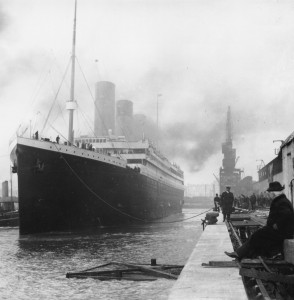
Photo source: http://www.titanicuniverse.com/
TITANIC (the movie) was playing in the background while I was studying for my Remlaw Exam yesterday. I have to say, it really is a great movie as I found myself overcome with acute nostalgia.
Titanic (the ship) History
The Titanic was not only the largest passenger ship of her time, she was also equipped with the finest luxuries and technology such that it was deemed ‘virtually unsinkable’. When the Titanic had sunk after hitting an iceberg in the Atlantic Ocean, more than half (1,517 to be exact) of the 2,223 passengers on board perished, making it one of the largest maritime disasters of all time. The 706 survivors were mainly first class passengers. The Titanic was designed to be able to float with four of the watertight compartments damaged, but unfortunately, the gaping hole from the crash exposed five of them.
Changes in Maritime Law
The incident led to changes in maritime law to avoid similar events from happening in the future. There were the lifeboat laws at that time but they certainly did not make sense (The laws weren’t based on the capacity but on the tonnage of the liner). As a result, although Titanic actually exceeded what the law required, there were not enough lifeboats on board (only less than half of the total passenger capacity of the ship could use the lifeboats). The laws never really intended to answer for all contingencies. So when a ship sinks and there aren’t enough lifeboats, who gets saved? Who said the first class passengers deserved to live more than the second or third class passengers?
The number lifeboats accounted for most of the deaths. What could have avoided the situation is dependent on the circumstances back then. But today, such an event could easily be avoided by, for one, information technology. For instance, some ice warnings from other vessels did not reach the captain, and they even had to throw distress signals through fireworks. Today, ships are equipped with maritime satellite communications technologies, including fleet broadband, VSAT (maritime satellite ground station or antenna) and shipboard mobile phone sevices. Obviously, information can now travel in such a way that collisions could be avoided, and help would surely be on its way and fast.
CHRISTOPHER JOHN LAO
Entry # 5

No comments:
Post a Comment